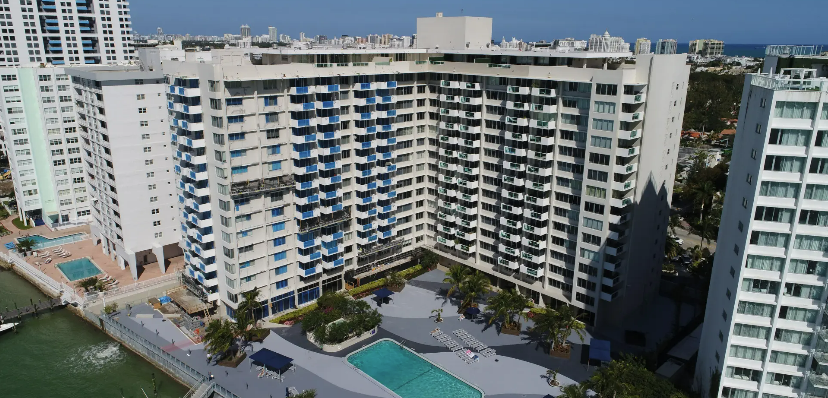SB-4D Milestone Vs. Structural Integrity Reserve Study
September 21, 2022

What are some primary differences between the Phase 1 Milestone visual examination and the visual examination associated with the Structural Integrity Reserve Study (SIRS)?
1. The Phase 1 Milestone Inspection is a structural inspection of a building’s primary structural systems, whereas the SIRS requires a visual inspection of the roof, load bearing walls or other primary structural members, floor, foundation, fireproofing and fire protection systems, plumbing, and any item with a deferred maintenance or replacement cost that exceeds $10,000.
2. Buildings that are three or more stories in height must have a “milestone inspection” of the buildings’ structural integrity when a building reaches: 30 years of age and every 10 years thereafter, or 25 years of age and every 10 years thereafter if the building is located within three miles of a coastline, whereas condominium associations and cooperative associations must complete a structural integrity reserve study every 10 years for each building in an association that is three stories or higher in height.
3. The Milestone Inspection requires a phase two inspection if there is evidence of “substantial structural deterioration” as determined by a phase one inspection.
What are some similarities between the Milestone Inspection and the visual examination associated with the Structural Integrity Reserve Study (SIRS)?
1. Both inspections must be performed by a licensed engineer or architect.
2. A developer must have a structural integrity reserve study completed for each building in the association that is three stories or more in height before turning over control of an association to the non-developer unit owners, and the developer’s turnover inspection report must comply with the milestone inspection requirements.
3. It is a breach of a board member or officer’s fiduciary duty if an association fails to complete a structural integrity reserve study or milestone inspection.
Here are some common questions about the newly instituted Florida Structural Integrity Reserve Studies:
1. Who must complete a Structural Integrity Reserve Study?
- Must be completed for buildings three (3) stories or higher in height every ten years and completed by December 31, 2024, for associations existing on or before July 1, 2022, which unit owners control.
2. Are developers required to perform this study?
- Developers must perform this study before turning the association over to unit owners.
3. Who can perform the reserve study?
- May be performed by any person qualified to perform such study. However, the visual inspection portion of the study must be performed by a licensed engineer/architect.
4. What should the Structural Reserve Study Include?
- Must identify the common areas being visually inspected, state the remaining expected useful life and replacement costs, and provide a recommended annual reserve amount that achieves the replacement or deferred maintenance costs of elements being visually inspected by the end of remaining useful life.
- Regarding reserves, the amount reserved for an item will be determined by the most recent structural integrity reserve study.
5. Can an Association waive Reserves?
- Effective December 31, 2024, members may not vote to waive reserves, provide less reserves, or use reserves for any purpose other than their intended purpose for the following items:
- Roof
- Load-bearing walls or other primary structural members
- Floor
- Foundation
- Fireproofing and fire protection systems
- Plumbing
- Electrical systems
- Waterproofing and exterior painting
- Windows
- Any other items requiring replacement/repair costs that exceed $10,000 and the failure to replace or maintain the item negatively affects the above items as determined by a licensed engineer/architect
6. Will a Developer be able to Waive Reserves?
- Developer-controlled associations may not vote to waive reserves or reduce funding of the reserves.
7. Who could get in trouble if reserves are not collected?
- Associations that fail to complete a structural reserve study will breach the officers’ and directors’ fiduciary relationship to the unit owners.
8. Who can receive and review the study?
- A copy of this study is considered an official record, is open to inspection by association members/authorized representatives, and must be kept by the association for 15 years.
Written by Scott Harvey-Lewis, Building Mavens, President, and Owner.
Tags:
SB-4D Milestone, SB-4D Structural Integrity Reserve Study

